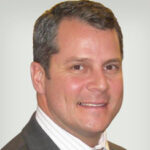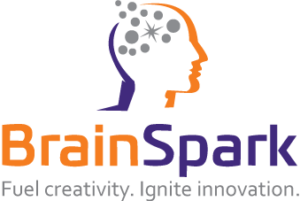Following a 14-year professional hockey career that spanned the NHL and the Olympics, Kevin Dahl found himself quickly transitioning to the entrepreneurial world. In 2009, he co-founded NexGoal, a national recruiting firm with a niche in finding and placing former athletes from all levels of competition into new careers.
NexGoal works directly with both clients and candidates to take the stress out of the job search for all parties involved. Many of their corporate clients share the belief that individuals who exhibit the core values of confidence, persistence, time management, and coachability make up their best employees.
Recently, I had the opportunity to interview Kevin and learn more about NexGoal’s recent success and what’s in store for 2022 and beyond.
Question: How has your athletic experience translated into the business world? How have you leveraged your experience as a professional athlete towards a career in recruiting?
Kevin: I found my journey in entrepreneurship to be similar to my athletic career in terms of the effort required and the adversity I faced. Athletes need persistence, work ethic, drive, leadership, and coachability to be successful at their chosen sport, and those same tenets are valuable in the business world.
My hockey tenure also taught me how to manage people and teammates effectively and what it truly means to be a part of a team. The importance of building a winning team full of true competitors is equally as vital as with any sports team. Hockey is a long season that, like recruiting, requires a consistent, daily effort.
Recruiting is about attention to detail, which plays a major role when comparing one’s natural ability with the intentionality and effort it takes to succeed. Winning in sports AND being on a good team requires a lot of concentration on small details. Natural ability alone can only get you so far but combined with the hunger to learn and ‘practice makes perfect’ mentality, the sky’s the limit.
Question: What first attracted you to starting NexGoal?
Kevin: When I retired from the game and started looking for jobs I had to go through the experience of putting together a resume and reaching out to people to help me. I didn’t have a lot of experience in those areas and learned there were a lot of athletes in the same boat.
After my experience in putting together a resume and putting my skills on paper without real-world experience, I realized I could help others do the same. That eventually led to starting NexGoal.
Question: What were the greatest challenges you faced working in recruiting as a result of COVID-19? What adjustments have you made in lieu of remote and hybrid workplaces?
Kevin: COVID-19 caused a lot of industries to rethink how they conducted their day-to-day business, and we were no exception. Through trial-and-error, we learned how to rely on technology like Zoom and adapt to our team working remotely. We were able to adapt to a new way of working with zero turnover. Because we had first-hand experience, our recruiting team could relate to organizational needs, and we knew what our clients were looking for.
The pandemic caused what many call the “Great Resignation,” where workers reevaluated their careers to find something that better aligned with their values. Our own research found that a good culture and feeling valued made workers the happiest, so we’ve become more thorough in our initial conversations and write-ups with new clients.
Question: In what industries and positions has NexGoal experienced your greatest growth?
Kevin: We reinvented our client list in wake of the pandemic. Based on our own experience, we knew what changes companies needed to make to survive the pandemic. We researched specific industries that were successfully remotely operating and looking to grow, and we learned which industries were putting hiring on hold. We’d previously had success with the Medical Device and Mortgage/Title industries. These industries adapted to the pandemic well, so we focused our energy on working with them. Our efforts led to great success.
Question: What sets NexGoal apart from its competitors?
Kevin: At the end of the day, our Recruiting Process is what sets us apart. We’re thorough in researching our client partners and our job seekers, and we have a scout’s eye for talent. This business is about building strong relationships, and our clients keep coming back to us. We’ve consistently received great testimonials from our partners.
“Since becoming a partner to assist us with our recruiting needs, NexGoal has done an excellent job identifying talent for our organization that aligns with our company culture, our values, and what our customers have come to expect from our sales team!”
Steve Wilson, US National Sales Manager, A Global Medical Device Company
Question: Why do clients always stay with NexGoal for a long period of time?
Kevin: Our clients stay with us for long periods of time, some over ten years, and many of our placed employees remain with our clients to this day. We became a true partner in their recruiting efforts.
This is where the athlete’s mindset comes into play. We’re competitive and persistent in our recruiting efforts, and we don’t settle for anything less than the best.
Question: Beyond recruiting, are there any resources you provide for job-seekers and employers alike?
Kevin: Yes! We take pride in keeping our audience up-to-date with all the latest hiring and workforce trends. From tips and tools to enhance job-seekers’ resumes, cover letters, interview
techniques (and more), to our guiding principles for employers monitoring remote/hybrid work, leadership, and company culture, you won’t want to miss what we have in store for 2022! Be sure to visit our Career Advice Library and sign up for our Job-Seeker and Employer eNewsletters.
Question: Where can people learn more about you and get connected with NexGoal Recruiting?
Kevin: You can learn more about NexGoal and get in touch with our recruiting team via this Contact Form. Find us on Twitter, Instagram, Facebook, and more here.









 In the book, you reference a phrase called “Power Positioning.” What is that?
In the book, you reference a phrase called “Power Positioning.” What is that?


 2) What benefits can an employer expect if they invest in improving creativity with their team?
2) What benefits can an employer expect if they invest in improving creativity with their team?
 6) You have a book coming out soon – what is it about and who is it for?
6) You have a book coming out soon – what is it about and who is it for?


 Often one of the only women at the table, DiGeronimo created Tech Savvy Women in 2008 to connect women in technology. DiGeronimo is known for her leadership skills and promoting inclusion in tech workplaces. “Tech Savvy Women is commonplace for women in tech to communicate,” DiGeronimo said.
Often one of the only women at the table, DiGeronimo created Tech Savvy Women in 2008 to connect women in technology. DiGeronimo is known for her leadership skills and promoting inclusion in tech workplaces. “Tech Savvy Women is commonplace for women in tech to communicate,” DiGeronimo said. Although tech is a great career option, there are fewer women that pursue technology or stem-based careers than their male counterparts. The organization was originally meant to bring women together and have a strong network in Northeast Ohio, but has evolved into a group of women, over 2,500 nationwide, which allows them to share ideas, network and connect.
Although tech is a great career option, there are fewer women that pursue technology or stem-based careers than their male counterparts. The organization was originally meant to bring women together and have a strong network in Northeast Ohio, but has evolved into a group of women, over 2,500 nationwide, which allows them to share ideas, network and connect. “We’ve helped each other get jobs, references, and other opportunities,” DiGeronimo said. “It’s made the industry seem smaller because we have more people connected in more places.”
“We’ve helped each other get jobs, references, and other opportunities,” DiGeronimo said. “It’s made the industry seem smaller because we have more people connected in more places.” DiGeronimo believes in professional coaching to get their professional goals straight, document and defined. “I think more women need to pay for professional coaching to help them get their ducks in a row,” DiGeronimo said.
DiGeronimo believes in professional coaching to get their professional goals straight, document and defined. “I think more women need to pay for professional coaching to help them get their ducks in a row,” DiGeronimo said. Interview by LynAnne Vucovich
Interview by LynAnne Vucovich
